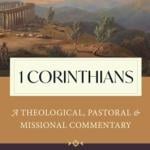John describes Jesus’ appearance following a wasf form, listing off His features from white head to face to feet and back to face 1. Head and hair 2. Eyes 3. Feet 4. Voice 5. Hand 6. Mouth 7. Face That list probably has some correlation with the days of creation: White hair is light on the head; eyes are like stars in the firmament; feet rest on the ground that is the footstool; the voice is the voice by which... Read more
















